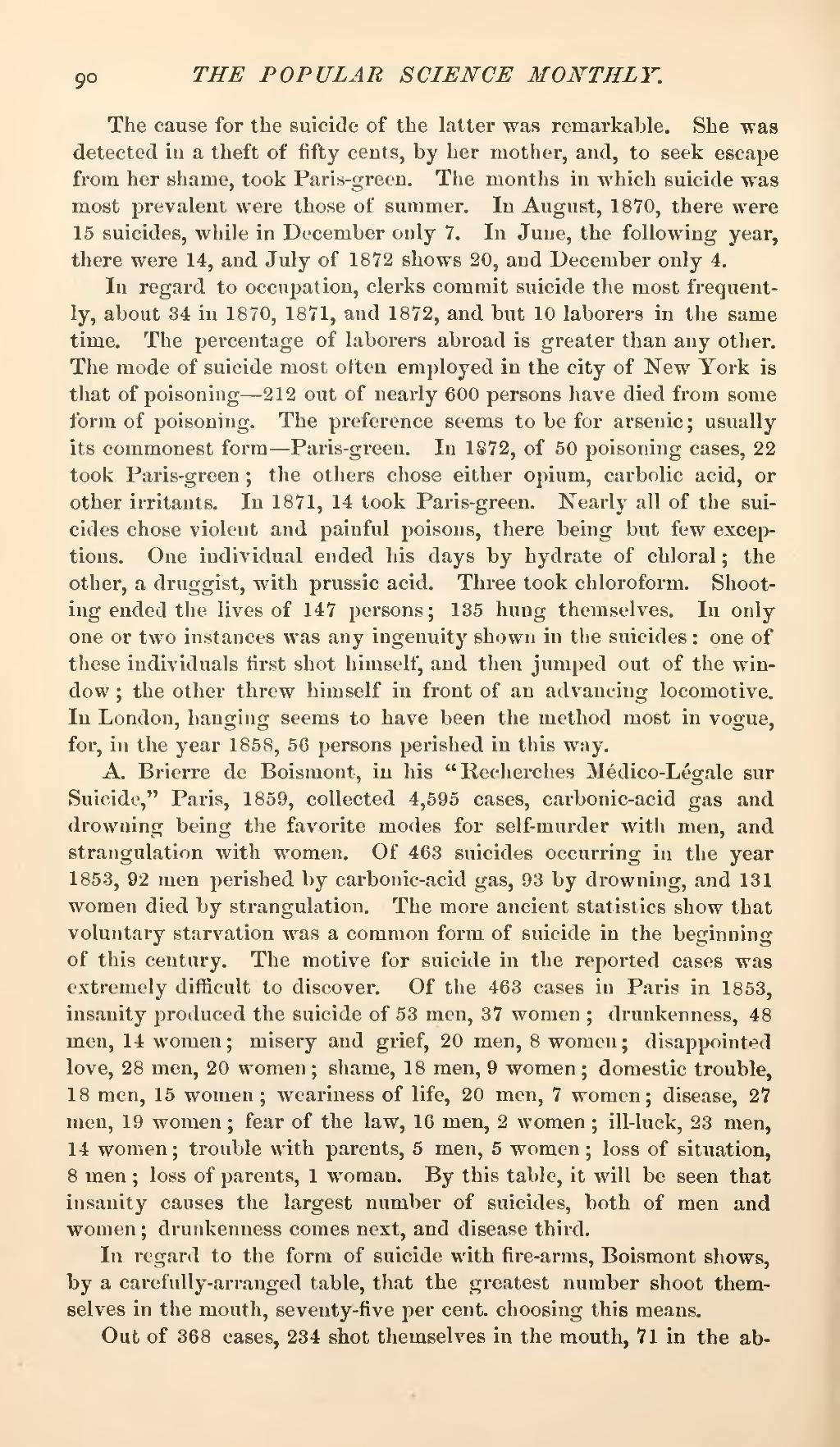The cause for the suicide of the latter was remarkable. She was detected in a theft of fifty cents, by her mother, and, to seek escape from her shame, took Paris-green. The months in which suicide was most prevalent were those of summer. In August, 1870, there were 15 suicides, while in December only 7. In June, the following year, there were 14, and July of 1872 shows 20, and December only 4.
In regard to occupation, clerks commit suicide the most frequently, about 34 in 1870, 1871, and 1872, and but 10 laborers in the same time. The percentage of laborers abroad is greater than any other. The mode of suicide most often employed in the city of New York is that of poisoning—212 out of nearly 600 persons have died from some form of poisoning. The preference seems to be for arsenic; usually its commonest form—Paris-green. In 1872, of 50 poisoning cases, 22 took Paris-green; the others chose either opium, carbolic acid, or other irritants. In 1871, 14 took Paris-green. Nearly all of the suicides chose violent and painful poisons, there being but few exceptions. One individual ended his days by hydrate of chloral; the other, a druggist, with prussic acid. Three took chloroform. Shooting ended the lives of 147 persons; 135 hung themselves. In only one or two instances was any ingenuity shown in the suicides: one of these individuals first shot himself, and then jumped out of the window; the other threw himself in front of an advancing locomotive. In London, hanging seems to have been the method most in vogue, for, in the year 1858, 56 persons perished in this way.
A. Brierre de Boismont, in his "Recherches Médico-Légale sur Suicide," Paris, 1859, collected 4,595 cases, carbonic-acid gas and drowning being the favorite modes for self-murder with men, and strangulation with women. Of 463 suicides occurring in the year 1853, 92 men perished by carbonic-acid gas, 93 by drowning, and 131 women died by strangulation. The more ancient statistics show that voluntary starvation was a common form of suicide in the beginning of this century. The motive for suicide in the reported cases was extremely difficult to discover. Of the 463 cases in Paris in 1853, insanity produced the suicide of 53 men, 37 women; drunkenness, 48 men, 14 women; misery and grief, 20 men, 8 women; disappointed love, 28 men, 20 women; shame, 18 men, 9 women; domestic trouble, 18 men, 15 women; weariness of life, 20 men, 7 women; disease, 27 men, 19 women; fear of the law, 16 men, 2 women; ill-luck, 23 men, 14 women; trouble with parents, 5 men, 5 women; loss of situation, 8 men; loss of parents, 1 woman. By this table, it will be seen that insanity causes the largest number of suicides, both of men and women; drunkenness comes next, and disease third.
In regard to the form of suicide with fire-arms, Boismont shows, by a carefully-arranged table, that the greatest number shoot themselves in the mouth, seventy-five per cent, choosing this means.
Out of 368 cases, 234 shot themselves in the mouth, 71 in the ab-

